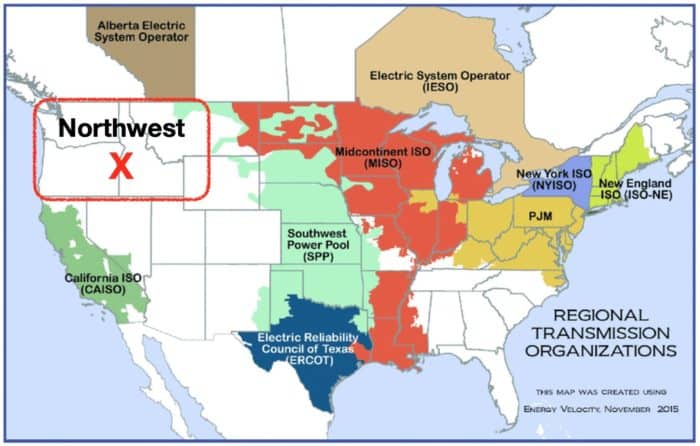Quick Fact: Data Centers
Data centers have been in the news lately as AI applications proliferate. They use a lot of energy to power and cool sophisticated computing systems.
How data centers fit into the Northwest regional power mix
The Northwest was an earlier destination for data centers thanks to ample, affordable, reliable hydropower as earlier energy-intensive industries like aluminum smelting left the region. Though difficult to predict, the fastest-growing sources of new regional load include microchip fabrication, electric vehicle charging, and data centers.
Data center energy use is part of the problem but not the overarching issue. Interestingly, most new data centers are now being developed outside the Northwest. According to a recent Wood Mackenzie study, the top five states for new data centers are Virginia, Texas, Georgia, Arizona, and Nevada. Washington doesn’t even make the top 15 list. The chart below shows announced data centers since January 2023.
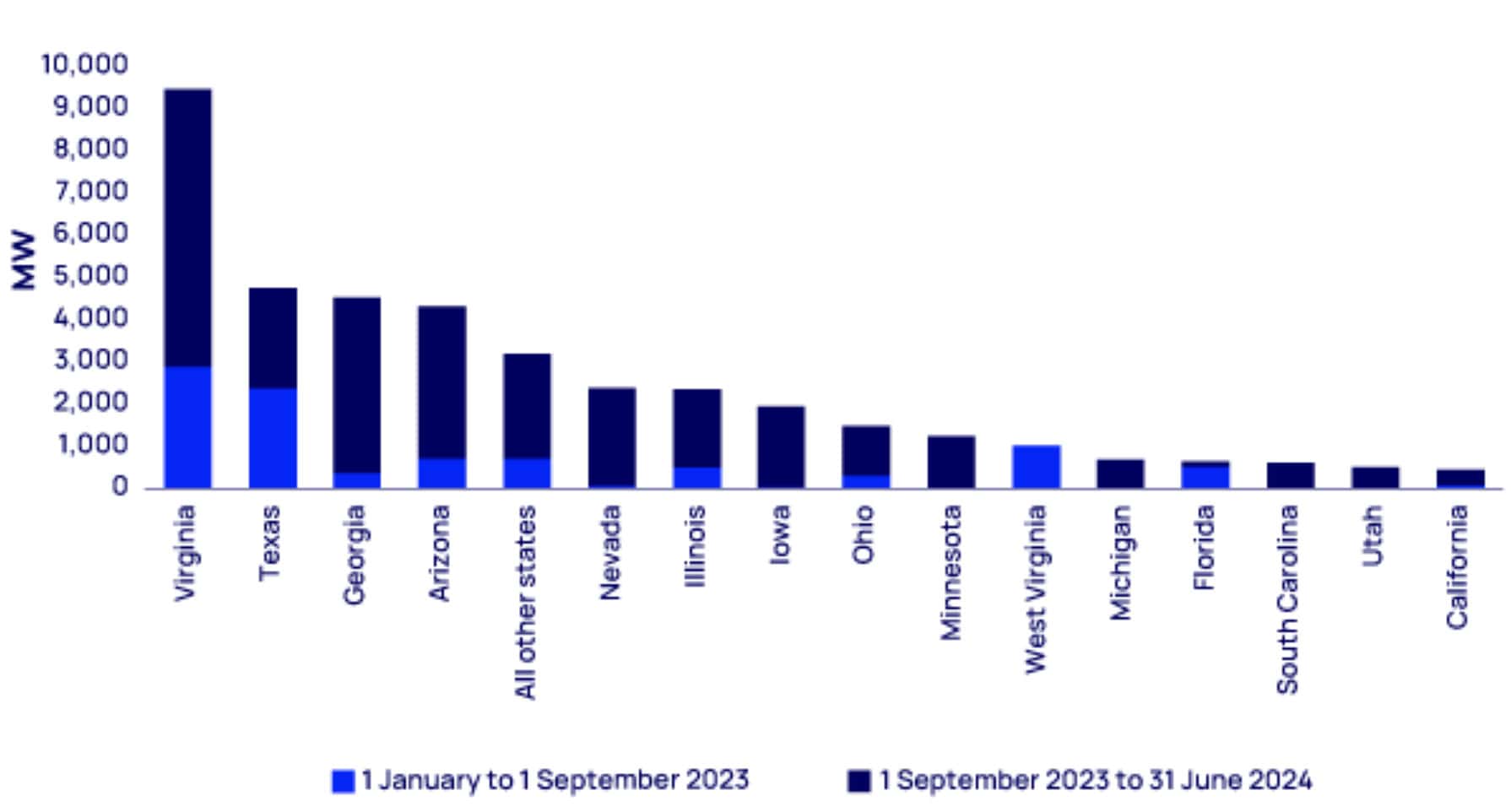
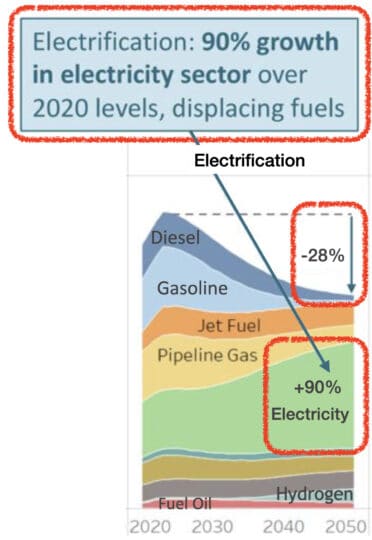
What’s driving the regional need for new clean energy?
The short answer: Climate Action. The NW region, the US, and the world are all trying to rapidly reduce greenhouse gas pollution (GHGs) by 50% by 2030 and net-zero by 2050. To do that means converting the largest sources of GHGs to electric, especially fossil-fueled transportation and heating – 45% of Washington’s GHG emissions come from the transportation sector.
In the chart at right, from Washington’s 2021 Energy Strategy, note how the state plans to reduce fossil fuels by 28% by replacing them with clean, renewable electricity. Washington estimates this transition will require a 90% increase in electricity supply.
What’s the impact of new demand on mainland electric rates and reliability?
As the chart above shows, Washington expects the electric load to nearly double. To meet that new load, enormous amounts of new renewable generation must be built. Trillions of investment dollars are required to modernize our evolving carbon-free grid. Millions of acres of land are needed to develop wind, solar, and transmission systems. All that land will need permits before projects can proceed. This has proven a significant roadblock to building a new renewable energy supply. Legislative solutions and innovation are needed, particularly in the areas of permitting and zoning. Over 70% of projects are canceled due to public resistance, also known as “Not in my backyard!” or NIMBY.
Consequently, energy demand is out-running supply, especially during extreme cold and hot weather events. As the economic laws of supply and demand have shown, supply shortages increase energy prices, with the potential for mainland regional blackouts. The BPA chart below shows the annual supply-demand deficit getting worse through at least 2034 (regional average MW).
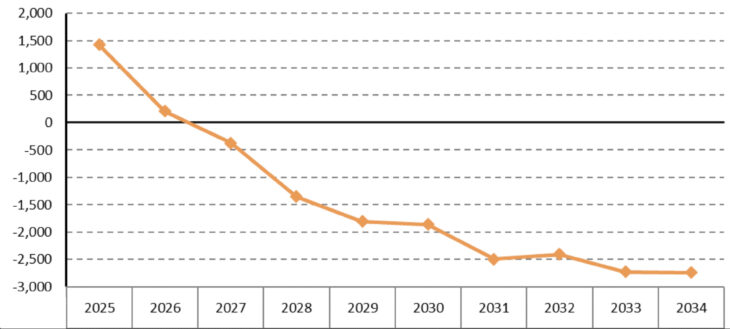
OPALCO is seeing mainland price shocks accelerate during cold snaps and heat waves. The chart below shows mainland market prices (left and top right charts) and a projection of the price trend over the next 15 years (bottom right chart). We saw market rates spiking over 800% during the January 2024 cold snap.
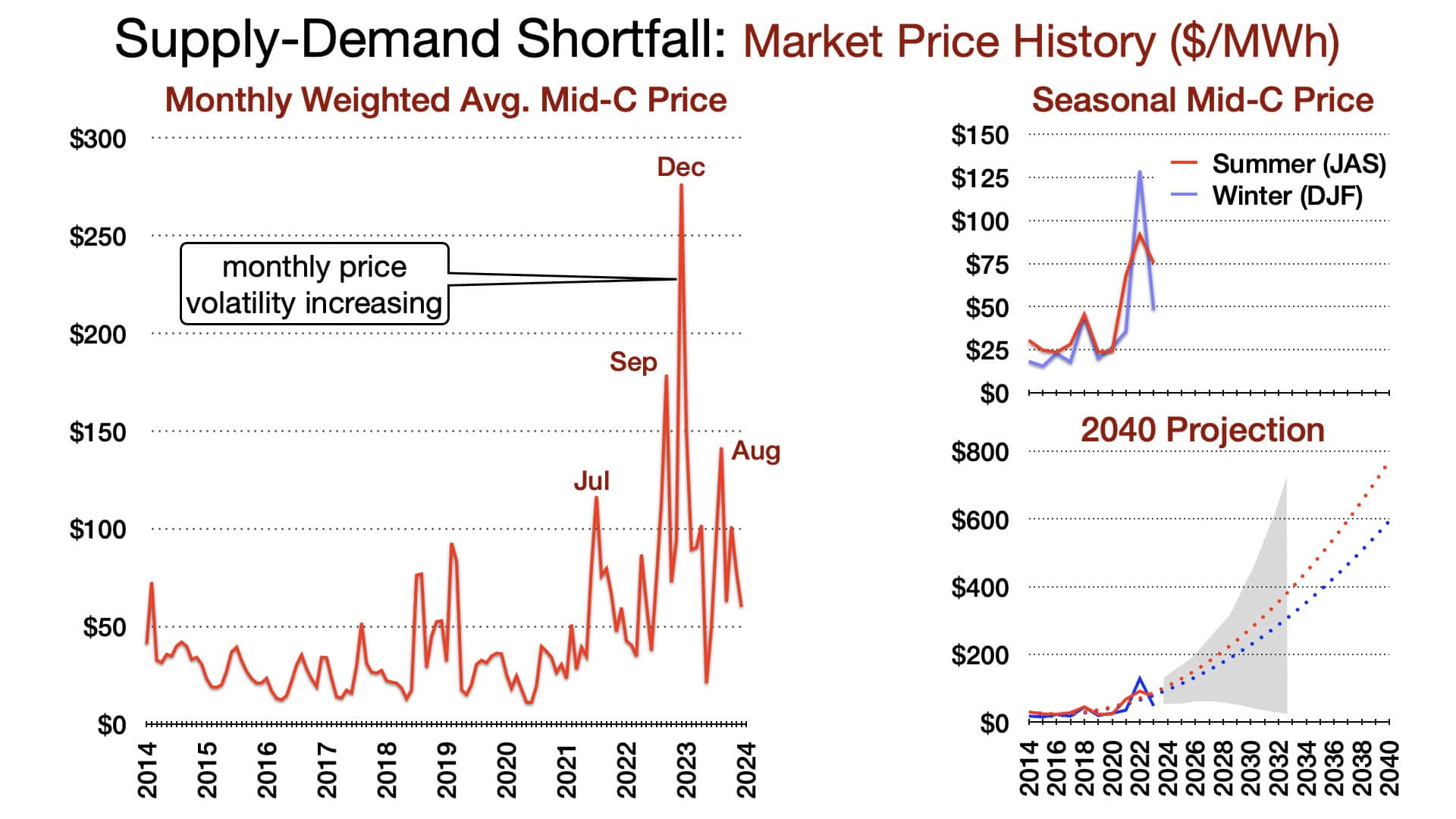
How can OPALCO members help reduce our dependence on mainland power?
OPALCO estimates that investing in about 135 acres of community solar on each of the four ferry-served islands will supply most of the power we need to power the islands during daytime summer, and sunny shoulder seasons. Battery storage would be paired with each solar array to help power essential public services through the night. Tidal generation is strong during winter and can help fill the gaps at night for the rest of the year.
Reducing the county’s dependence on mainland energy and fossil fuels helps reduce the impact of mainland price shocks and outages. And it helps reduce county climate pollution.
The best way to help is to support community solar projects in the county. The forthcoming Bailer Hill Microgrid is in permitting, and most islanders support the project. Make sure County leadership hears your voice. The Bailer Hill Microgrid is an agri-solar project in partnership between OPALCO and sheep farmers. It helps them improve their farming economics and access previously unaffordable farmland.
Each community solar project will more than double all the current solar in the county. It will be more reliable at a fraction of the cost of rooftop solar. More bang for the buck! Rooftop solar helps, but it will only supply a very small fraction of what is needed in the county – less than 10%.
During mainland price shocks and regional blackouts, vulnerable populations get hit the hardest. We are all in this together, and good solutions to prepare our community are at hand. Since the OPALCO co-op started in 1937, the community and co-op have always stepped up together to meet the critical energy needs of islanders.
Learn More
Seattle Times: Utility Rate Increases Driven By Supply-Demand Risk
Information on Washington state’s 2021 Energy Strategy
https://www.opalco.com/quick-fact-wa-2021-energy-strategy/2021/03/
National Data Center Forecast
https://www.woodmac.com/horizons/gridlock-demand-dilemma-facing-us-power-industry
Northwest Data Center and Chip Fabrication Forecast
https://www.nwcouncil.org/fs/18660/2024_03_p3.pdf
Northwest EV Charging and Data Center Forecast
Northwest Load Forecast
https://www.nwcouncil.org/news/2024/08/22/load_forecasting_upgrades_market_study_results/
Northwest Approach to Solar and Electric Vehicles in the Long-Term Load
Forecast
https://www.nwcouncil.org/fs/18658/2024_03_p2.pdf
WA Transportation Electrification Strategy
https://www.commerce.wa.gov/clean-transportation/tes/



